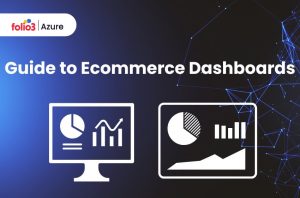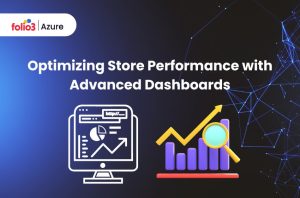Table of Contents
ToggleThe retail industry is a major driving force in the world’s economy. It brings manufacturers and consumers together, stirring economic growth and creating many jobs. Customers worldwide buy products and services from thousands of businesses.
In the rapid retail sector, promptly making sensible and timely decisions is necessary. A “retail dashboard” is helpful in this situation. Retail dashboards allow you to improve your operations while gaining valuable information through powerful tools and real-time data.
This article will examine what retail dashboards are, their important features, types of retail dashboards, and their numerous advantages.
What Is a Retail Dashboard?
A Retail Dashboard is a visual tool that combines and displays your retail data in a way that is easy to understand and analyze. It provides updated information regarding your sales, stocks, customer behavior, and other important metrics. Using a retail dashboard, you can track performance, spot trends, and make decisions based on data to improve your retail strategy.
Retail dashboards are mandatory for modern retail management because they provide a centralized view of your business’s performance. While traditional reports can be static and obsolete when analyzed, retail dashboards provide dynamic and interactive visualizations. These dashboards gather data from various sources, including POS systems, CRM software, and inventory management systems. Thus, an interactive retail dashboard provides you with a real-time, complete, and comprehensive view of your retail operations at all times.
Key Features of an Effective Retail Performance Dashboard
Since we now know that a retail Business cannot survive in the modern retail Sector without a good dashboard, we must be aware of its salient features.
1. User-Friendly Interface
One key feature of a retail dashboard is its “user-friendly interface.” A well-designed dashboard can be navigated, and its data can be interpreted easily by non-technical users as well. The layout’s ease of use and clear representations help you easily understand complicated details. This user-friendliness is necessary for helping your team make reasonable conclusions without requiring specialist expertise in data analysis.
An effective retail dashboard presents data in a visually appealing and straightforward manner. It uses charts, graphs, and color-coded indicators to highlight key metrics and trends. This visual clarity helps you quickly interpret the state of your business and identify areas that require attention. For example, a sudden dip in sales levels can be spotted immediately, allowing you to take action.
2. Real-Time Data Update
Retail is an industry with fluctuating conditions. An excellent retail dashboard provides instant data updates. This ensures you constantly have updated information, allowing you to respond promptly to market changes, customer demands, and sales trends.
Real-time data updates are very helpful during advertising campaigns or peak shopping seasons when quick decisions can immensely impact sales.
You can monitor sales campaigns, track inventory levels, and manage staffing requirements with real-time data. For example, if a particular product sells faster than expected, you can quickly restock it to meet the demand. Or, if a promotional offer isn’t performing well, you can adjust the strategy in real time for better results.
3. Customizable Metrics and Visualizations
The ability to customize the dashboard is a huge advantage. You can modify the dashboard to display the most important indicators and visual data. You can adjust the dashboard to meet your specific needs, such as sales performance, inventory levels, or customer satisfaction. This customization ensures that you focus on the key performance indicators (KPIs) that lead your business forward.
With configurable visuals, you can create personalized views of your operations. Various departments or positions in your company might have separate dashboards set up for them. An inventory manager would monitor stock levels and order fulfillment rates, whereas a sales manager would concentrate on sales trends.
This personalized approach ensures that every team member can access the data required to perform their duties.
4. Mobile Accessibility
Accessing the retail dashboard from your mobile device is essential, as it brings every detail to your fingertips and from any place. You can stay updated on your business’s performance on the go. Mobile accessibility is beneficial for multi-store operations or managers who travel frequently.
With mobile access, you can track sales performance and stock levels and promptly respond to customer inquiries. This flexibility enhances your ability to manage your retail business efficiently and effectively.
5. Integration With Various Data Sources
A solid retail dashboard integrates easily with multiple data sources. Whether it’s your POS system, CRM, or eCommerce platform, the dashboard can extract data from various sources and provide a combined view.
Data integration increases the accuracy of your data insights and provides deep analysis. Consolidating data from numerous sources also eliminates the possibility of obsolete data.
Integration with multiple data sources allows you to cross-check data. For example, you can compare sales data from your POS system with customer data from your CRM to spot purchasing trends and customer preferences. This approach provides updated information and helps you make intelligent decisions.
Different Types of Retail Dashboard Examples
Retail dashboards are available in various forms. Each one fulfills a particular aspect of retail operations. Here are some popular retail dashboards:
1. Retail Store Dashboard
A Retail Store Dashboard shows the business’s key performance indicators (KPIs), such as foot traffic, sales per square foot, and conversion rates. This helps in understanding shop operations and identifying opportunities for improvement. Monitoring these variables can enhance shop layouts and customer experiences and boost sales.
For example, a high foot traffic count combined with a low conversion rate on the dashboard can mean that people are coming into your business but not making any purchases. With this insight, you may look at problems like product availability, cost, or customer service. By fixing these problems, you may improve customer satisfaction and increase revenue.
2. Retail KPI Dashboard
The Retail KPI Dashboard focuses on key performance indicators like sales growth, customer acquisition cost, and return on investment. It provides a high-level view of your business’s health and progress, which is important for future planning and performance evaluation.
By tracking KPIs, you can measure the success of your business strategies and make data-led decisions to achieve your targets. For instance, if your customer acquisition cost is high, you can assess your marketing campaigns and identify areas for improvement.
3. Retail Analytics Dashboard
A Retail Analytics Dashboard provides a much deeper analysis of data. It provides deep knowledge regarding customer behavior, purchasing patterns, and market trends. It helps you to make decisions based on detailed data to improve your retail strategy. Deep data analysis allows you to identify growth opportunities, modify pricing strategies, and improve customer retention.
Customer demographics, popular product categories, and peak shopping hours are just a few examples of trends that may be identified by studying purchasing activity data. This information can help satisfy client wants by altering product offers and marketing campaigns. Knowledge of purchase trends can also help you accurately estimate demand and manage stock levels.
4. Retail Inventory Management Dashboard
Efficient Inventory management is mandatory for success in the retail sector. The Retail Inventory Management Dashboard monitors stock levels, turnover rates, and order fulfillment.
It ensures that the right products in the right quantities are available at the right time.
This dashboard helps you eliminate stockouts and overstockings. Therefore, improving efficiency and customer satisfaction.
For example, tracking stock levels can help you identify slow-moving products and use strategies to get rid of extra stock. On the other hand, tracking turnover rates helps you identify high-demand products that must be restocked quickly. This is a proactive approach to inventory management.
5. Sales and Order Dashboard
The Sales and Order Dashboard gives a detailed view of sales performance and order processing. It traces data regarding average order value, sales by category, and order processing times. Thus helping you simplify your sales operations. This dashboard is vital for understanding sales trends, managing order fulfillment, and improving customer satisfaction.
By monitoring sales performance, you can recognize top-selling products, peak sales periods, and sales by category. This information helps you make better decisions about product offerings, pricing strategies, and marketing campaigns.
6. Promotional Optimization Dashboard
Effective promotional campaigns guarantee good sales. The Promotional Optimization Dashboard measures the success of your promotional strategies. It tracks promotional ROI, discount usage, and sales uplift metrics, enabling you to refine your promotional strategy. This dashboard helps you identify which promotions boost sales and which need modifications.
For example, you can evaluate the data to identify issues if a promotion is not generating the expected sales. It is possible that the promotion is not reaching the right audience or that the discount is not attractive enough.
By understanding these factors, you can adjust your promotional strategy to have a higher impact.
7. Product Availability Dashboard
The Product Availability Dashboard tracks stock levels and product availability across retail locations. It helps you minimize stockouts and overstocking. This dashboard is essential for managing inventory across multiple stores and distribution centers. Maintaining optimal inventory levels can also increase customer satisfaction.
For instance, if a particular product is out of stock in one location but available in another, you can transfer inventory to meet demand. This proactive approach to inventory management helps you maintain high levels of customer satisfaction and loyalty.
8. Average Product Discount Dashboard
Understanding the effect of discount offers on sales is important. The Average Product Discount Dashboard calculates the average discount given on products and its effect on sales and margins. It helps you maintain the right balance between competitive pricing and profitability. By evaluating data from this dashboard, you can determine the best discount levels that attract customers without affecting your profit margins.
For example, if the dashboard shows that high discounts increase sales volume but decrease overall profitability, you may need to modify your discount strategy. On the other hand, if lower discounts lead to higher sales, you can get better margins while attracting customers. This knowledge enables you to create intelligent pricing strategies that maximize revenue and customer satisfaction.
Conclusion
A retail dashboard is a must-have for retail businesses today. It boosts the business by providing real-time insights, customizable metrics, and easy data integration. This leads to smart decision-making and efficiency, thus ensuring better business outcomes.
Its user-friendly interface allows easy data access and interpretation, with real-time updates informing you of market changes.
The ability to personalize it lets you focus on critical metrics, while mobile accessibility supports decision-making from anywhere. Integration with various data sources offers a comprehensive view of operations, improving accuracy.
Each type of dashboard serves a unique purpose, helping achieve business targets. Investing in retail dashboard software transforms business management.
For more details and advanced business solutions, visit our comprehensive guide on business dashboard software. This resource provides thorough information on choosing the right dashboard software for your business, ensuring you have the tools you need to succeed.
With an intelligent retail dashboard, you can transform your data into actionable insights, simplify your operations, and attain better business outcomes. Don’t wait—start using the power of retail dashboards to achieve the maximum from your retail business today!


